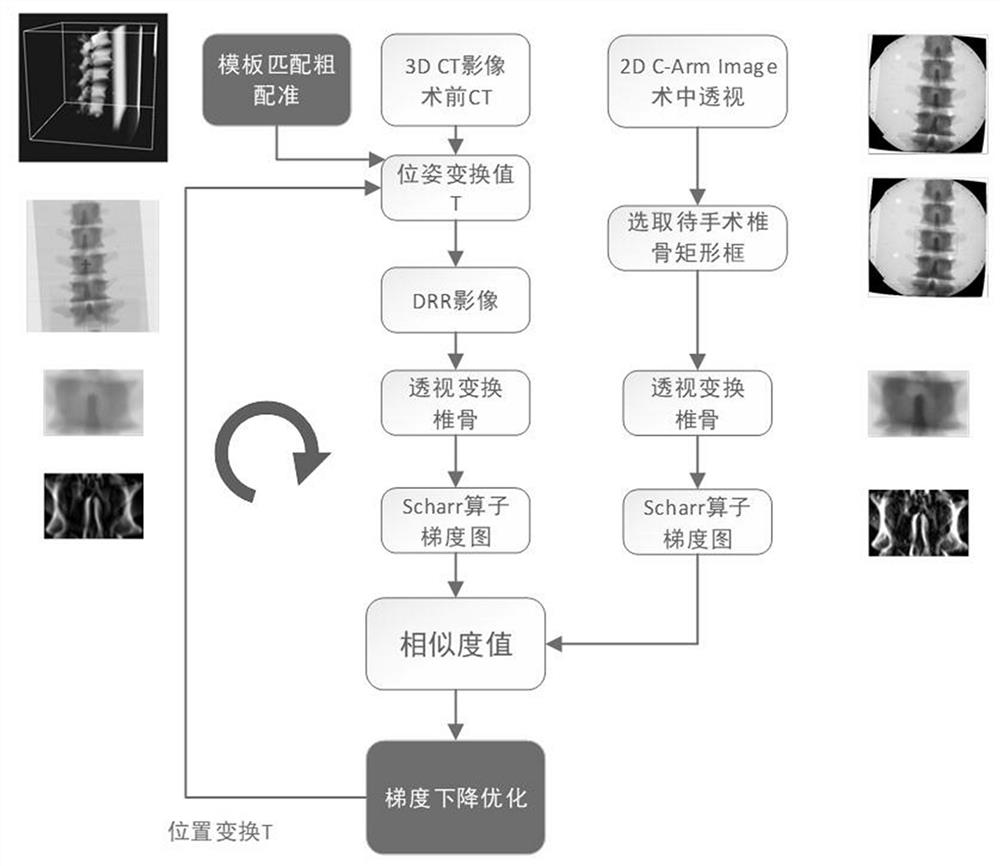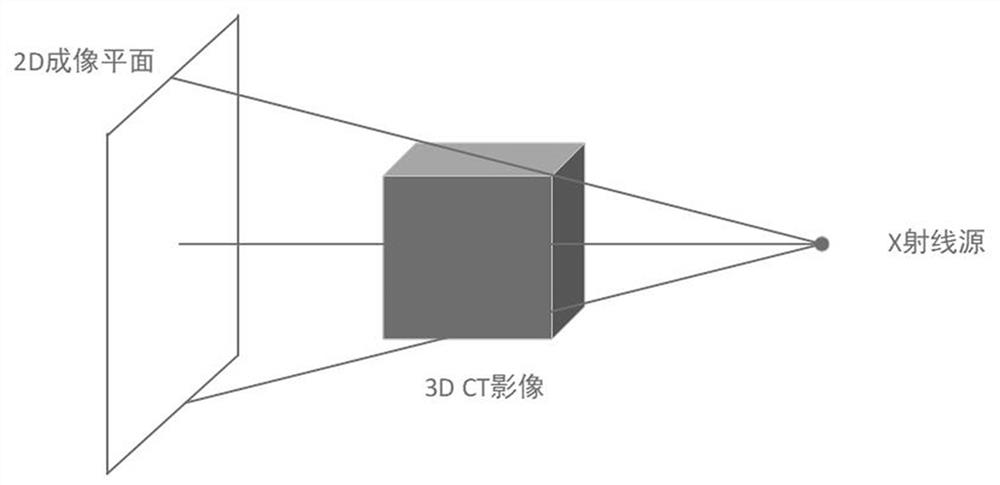A 2d-3d Image Registration Algorithm
A 2D-3D, imaging technology, applied in the field of surgical navigation, can solve problems such as time-consuming, inability to obtain accurate results, and affect the application of algorithms, and achieve the effect of accurate registration results
- Summary
- Abstract
- Description
- Claims
- Application Information
AI Technical Summary
Problems solved by technology
Method used
Image
Examples
Embodiment Construction
[0039] The present invention will be further explained below in conjunction with the accompanying drawings and specific embodiments.
[0040] The present invention is mainly applied in the CT perspective image registration of human vertebrae, figure 1 Be the flow chart of the present invention, as figure 1 As shown, the 2D-3D image registration algorithm of the present invention comprises steps:
[0041] (1) Scan the affected part of the patient (spine in this example) through the C-arm machine or CT machine to obtain a preoperative 3D image; automatically segment the preoperative 3D image to obtain a vertebral image, and then obtain the center point position of the vertebrae (ie The coordinates of the center point of the vertebra in the image coordinate system) and the bounding box (ie, the circumscribed cuboid of the vertebra);
[0042] (2) Use the C-arm machine or CT machine to perform anteroposterior and lateral perspective scans on the patient's affected area during t...
PUM
 Login to View More
Login to View More Abstract
Description
Claims
Application Information
 Login to View More
Login to View More - Generate Ideas
- Intellectual Property
- Life Sciences
- Materials
- Tech Scout
- Unparalleled Data Quality
- Higher Quality Content
- 60% Fewer Hallucinations
Browse by: Latest US Patents, China's latest patents, Technical Efficacy Thesaurus, Application Domain, Technology Topic, Popular Technical Reports.
© 2025 PatSnap. All rights reserved.Legal|Privacy policy|Modern Slavery Act Transparency Statement|Sitemap|About US| Contact US: help@patsnap.com



